Wrapping basics
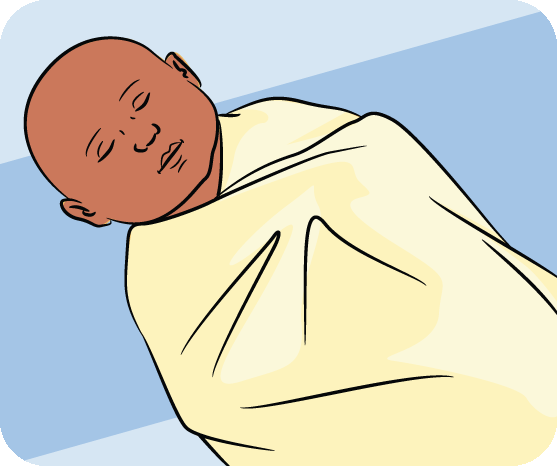
Wrapping soothes some babies. It also cuts the risk of sudden unexpected death in infancy (SUDI), including SIDS and fatal sleeping accidents, because it keeps babies on their backs during sleep. Wrap babies from birth until they can roll onto their tummies (4-6 months).
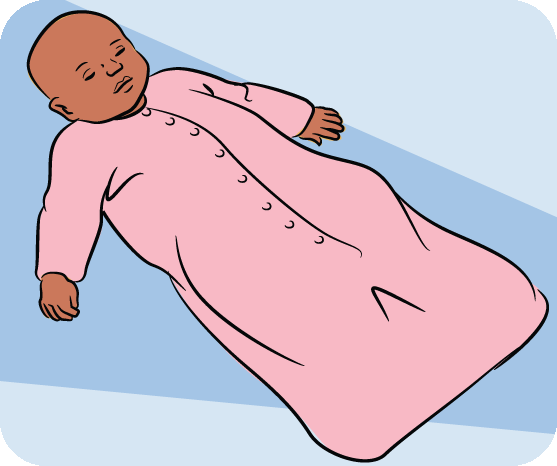
If your baby doesn’t like to be wrapped or can roll onto their tummy, try a safe infant sleeping bag instead. This can also keep babies on their backs, which reduces SUDI risk.
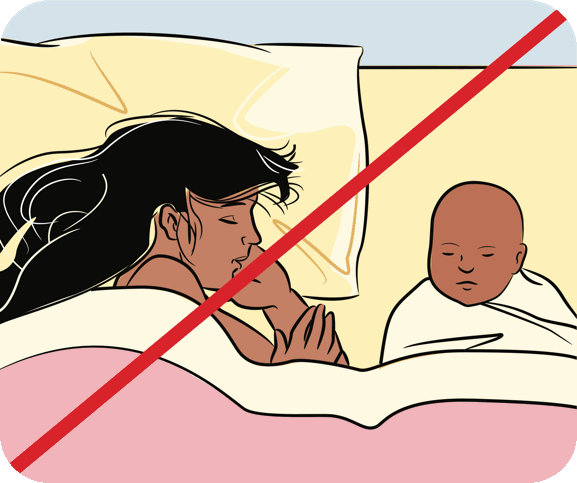
If you share a bed with your baby, don’t wrap baby – they might get too hot. This increases the risk of SUDI. Dress baby as you would dress yourself. Co-sleeping can be dangerous for your baby.
How to wrap a baby: six steps
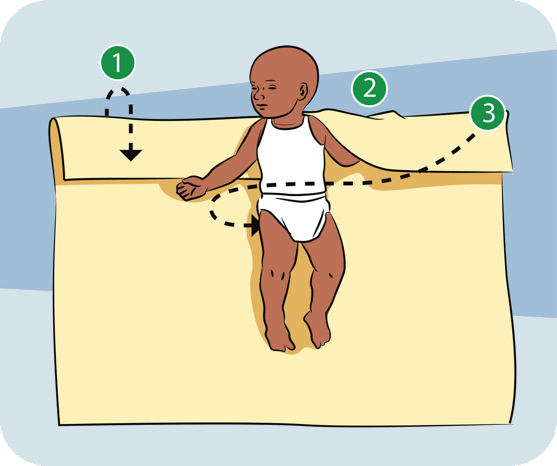
1. Use a lightweight cotton or muslin wrap. Fold the top edge down by about 20 cm. Lay baby with shoulders in line with the fold.
2. Place one of baby’s hands under the fold.
3. Bring the edge of the wrap across the body. Tuck it under baby’s legs.
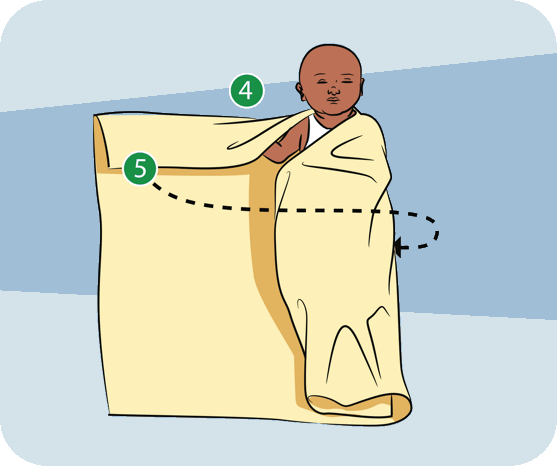
4. Place the other hand under the fold.
5. Bring the other edge of the wrap across baby’s body. Tuck in under baby’s back.
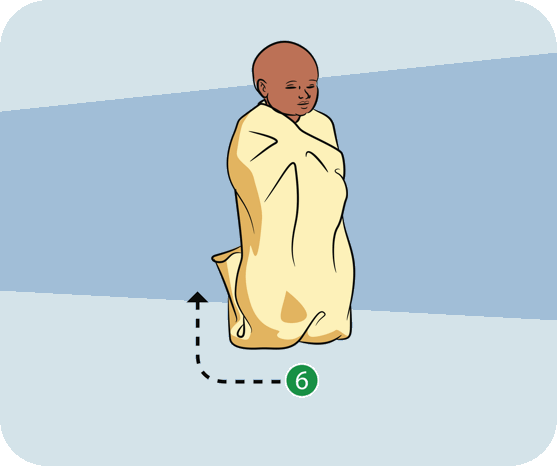
6. Fold any extra length up and under baby’s legs. Wrap firmly, but make sure that the wrap isn’t too tight and that baby can fully stretch out their legs. Wrapping the legs and chest too tightly can lead to hip and breathing problems.
How to avoid overheating when wrapping a baby

In warm weather, dress your baby in a singlet and nappy underneath the wrap. Overheating has been linked to SUDI, so try to keep baby cool and comfortable during sleep.
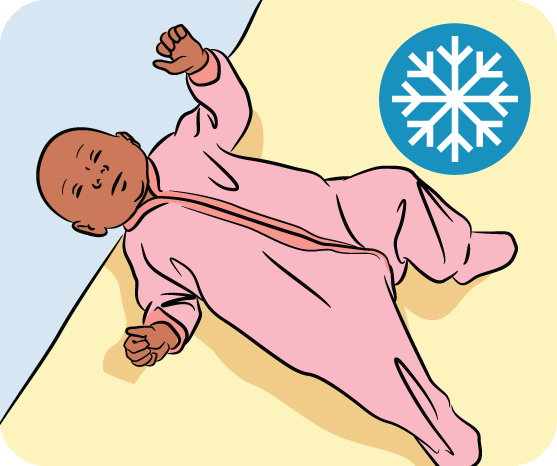
In cool weather, dress your baby in a lightweight jumpsuit under the wrap. Don’t use a bunny rug or blanket – it can cause overheating. Be careful not to overheat the house, especially if baby is ill.
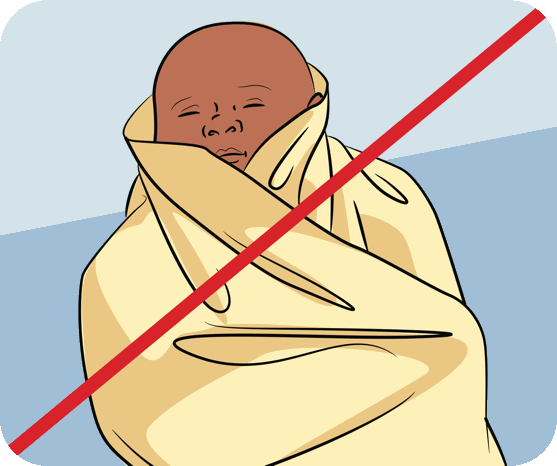
Wraps that are too high can cause baby to overheat and also block baby’s breathing. Don’t let the wrap cover your baby’s face, head, ears or chin.